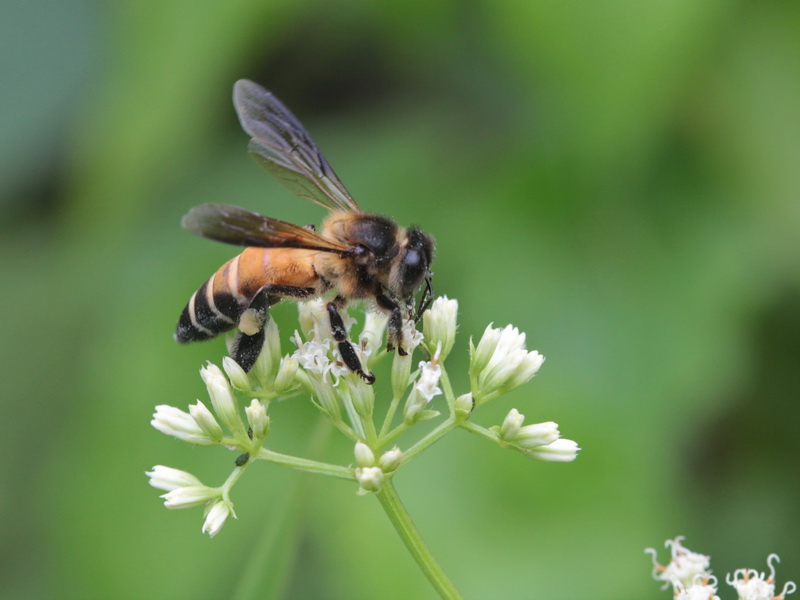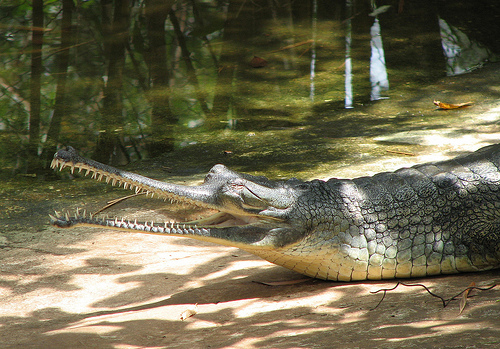Geetha G Thimmegowda, a researcher with the National Centre for Biological Sciences in Bangalore, first noticed a few years back, that the number of Giant Asian honey bees were gradually decreasing in urban areas of the city. Immediately, the scientist in her wanted to find out more. She began traveling to different locations of Bangalore to observe and collect the bee.
Four years and more than 1,800 individual bee observations later, Geetha and her colleagues have not only found the reason for the bee’s declining numbers in city areas, they also have one of the first research in the world that tries to understand the effect of air pollution on organisms other than humans.
Also Read: Bees can connect symbols to numbers just like humans
Albeit small-sized, Apis dorsata, or the Giant Asian Honey Bee is responsible for producing 80% of India’s honey and indeed an essential, indispensable part of the food laid on our tables. The bee helps in pollinating most of the fruits and vegetables that are grown in the country. In fact, if not for the insect pollinators like the honey bee 75% of our crops would cease to grow. In Karnataka alone, the Giant Asian honey bee pollinates 687 plants.
When Geetha first studied a honey bee that had been buzzing around the campus gardens in a relatively pollution-free locality, she found a copious amount of pollens – as it should be – on the body of the insect. However, the body of another bee from a heavily industrialized area of the city was covered with very fine dust particles. These were later identified as lead, arsenic, tungsten, and numerous other toxic materials. This tiny debris, less than 10 microns in size, are known as Respirable Suspended Particulate Matter, or RSPM, a major component of air pollution.
The shocking revelation prompted the researchers to do more thorough research, the result of which have been published this week in Proceedings of the National Academy of Sciences, USA on the effects of air pollution on the behaviour, physiology, and molecular aspects of the Giant Asian Honey Bee in one of India’s fastest-growing megacities.
According to the World Health Organisation (WHO) 9 out of the 10 most polluted cities in the world are in India. The cost of such pollutants floating in the air to human health has been well studied. From breathlessness, acute lung dysfunctionality to cardio-vascular troubles, it is known that foul air adversely affects children and adults.

In the same lines, the researchers now analysed the effect of air quality on cardiovascular and overall health of the honey bees.
They found,
-Over 80% of the bees collected from the moderate and highly polluted sites died within 24 hours.
-Bees from more polluted areas of the city visited less flowers than those in less polluted areas.
-Bees from more polluted areas showed significant differences in heartbeats, a sign of poor heart health and low blood cell count.
– Bees from polluted areas have a higher expression of genes linked to stress, decreasing their life span and had low immunity, and metabolism.
What’s more, when the same experiments were repeated on fruit flies or drosophila, the results were similar showing that the effect of air pollution was not species-specific but had a general adverse effect on other insects as well.
Arunabha Ghosh, founder and CEO of the Council on Energy, Environment and Water tells technolgynetwroks,
“So far, much of the air quality studies in India have either considered sources of pollution or impact on human health and to an extent on economic productivity. This study covers important new ground, by examining the impact of air pollution on pollinators, which would have serious implications for agricultural output in India.”
“From a policy perspective, we need, first, more dense air quality monitoring networks in agricultural areas (rural areas suffer from data blindspots). Secondly, impact studies for different agro-ecological zones should be initiated, so that we have a better sense of how air quality is likely to impact pollinators and plants in various regions. Thirdly, there is a need for clearer communication of the results of such studies to communities, so that they become more aware of the livelihood consequences of the poor air they are breathing. Finally, such findings further underscore the need to raise India’s ambient air quality standards.”









